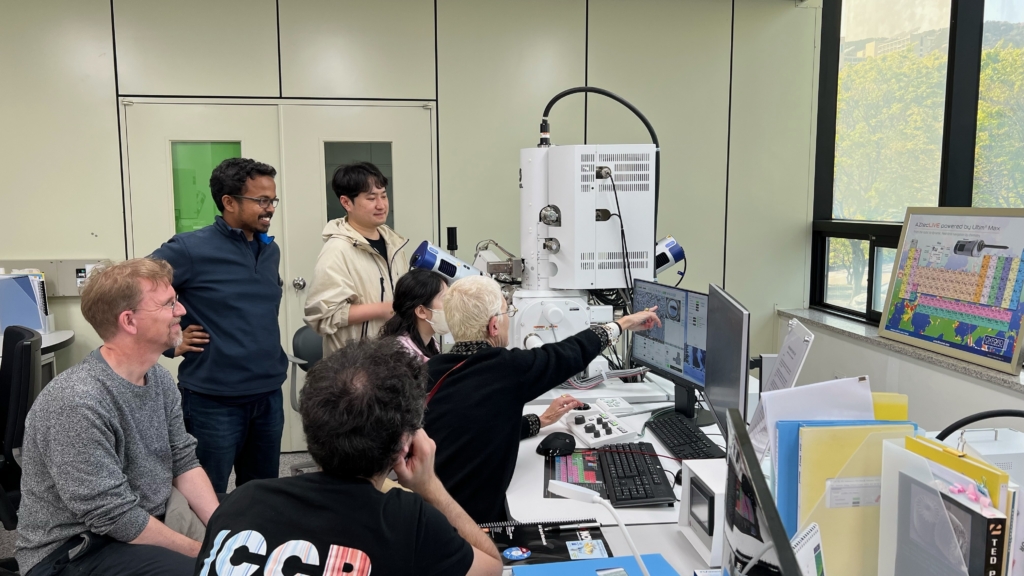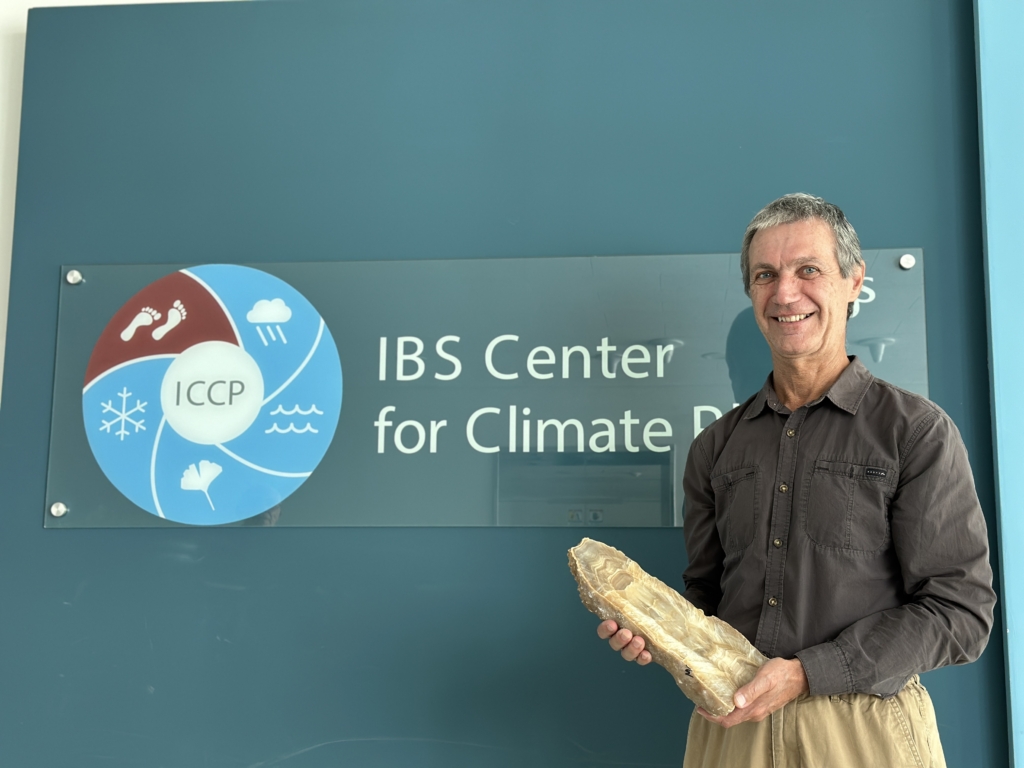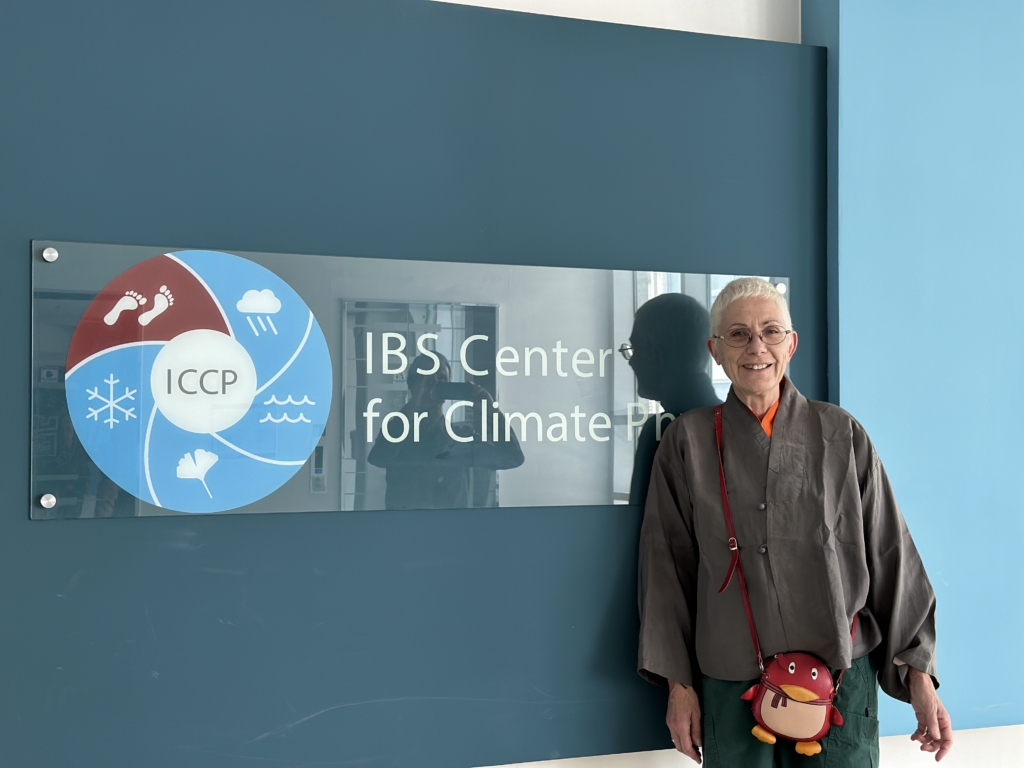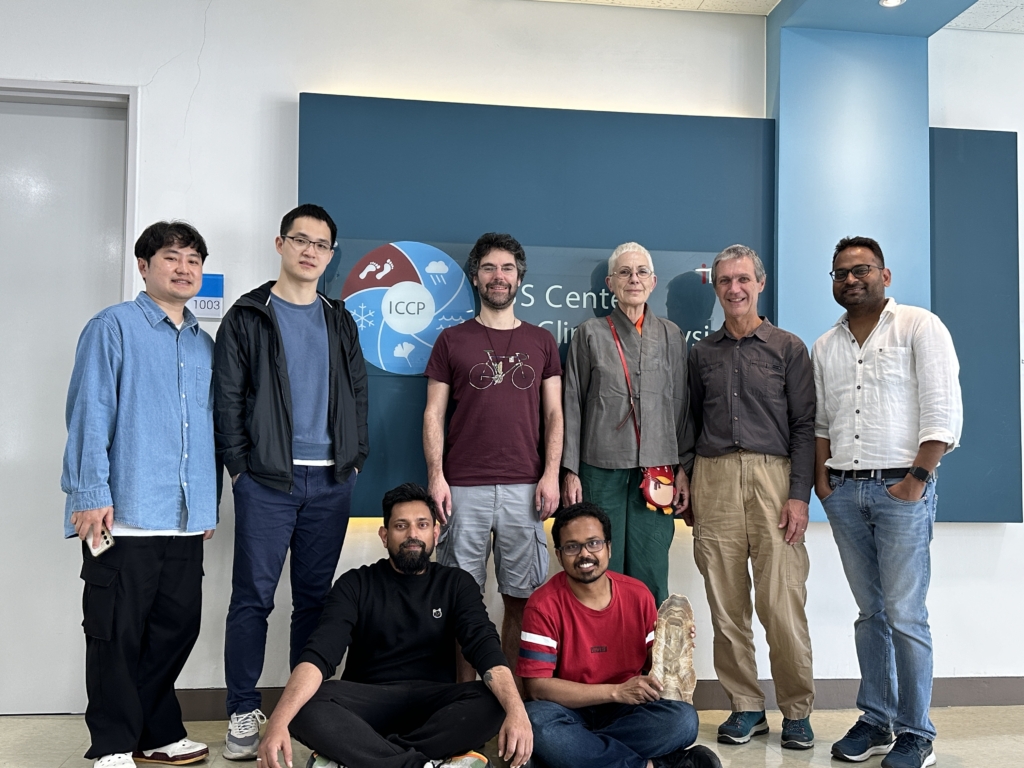Speleothem experts Prof. Silvia Frisia and Dr. Andrea Borsato both from the University of Newcastle in Australia visited the IBS Center for Climate Physics (ICCP) from April 3 ~ 12, 2024. The main goal of their visit was to collaborate with ICCP scientists on the analysis of recently-obtained stalagmite samples from Botswana. They also gave a series of hands-on mini workshops on speleothem fabrics using optical microscopes and electron microscopes and on U-series dating.



Q1. What are your main research fields?
Silvia:
My main research field is carbonate sedimentology with focus on crystallization processes. I use the Scanning and Transmission Electron Microscopes to investigate the crystals at atomic scale and seek a memory of their history in defects within their structure. The history of carbonate minerals, particularly calcite and aragonite, influences chemical and physical properties that are commonly used to reconstruct past climate variability from geological archives such as stalagmites. It is, therefore, important to understand how the crystals that we observe now came to be. It is possible that at first there was a precursor, a “parent” that formed from the water, was very small, in the order of few nanometres, and had a disordered structure. That is, rather than having a lattice with well ordered rows of atoms, the atoms were randomly arranged, and the material was amorphous, like glass. Then it became an ordered, tiny crystal. Many of these tiny crystals could then attach to each other and form a bigger crystals. This process explains how stalagmites can trap organic molecules, or certain elements that, otherwise, would not be accommodated by the structure (lattice) of calcite (or aragonite).
Andrea:
My main research fields are speleothem science, high-resolution trace element analyses, synchrotron radiation X-ray fluorescence (SR-XRF), hydrogeology, Quaternary geology and paleoclimate reconstruction from continental carbonates. I currently work on paleoclimate reconstructions from speleothems from the South Pacific (Tonga, Cook Islands, French Polynesia), Australia, New Zealand, Italy, South Africa and Patagonia as well as subglacial carbonates from Antarctica and the Italian Alps.
Q2. What made you become a scientist / geologist?
Silvia:
I was fascinated by fossils and minerals since I was a child. I went hiking with my father, who was a photographer and took photos of beautiful rock formations. Geology combines art and science, there is space for intuition in geology and space for immense beauty and many mysteries still to be solved.
Andrea:
When I was young I was an enthusiast speleologist and I explored and discovered several new caves in the Italian Alps. This inspired me to study geology and to pursue a career in speleothem science. In 1995 I was the first PhD student in Italy to graduate with a thesis on speleothems as paleoclimate archive.
Q3. What is your favorite aspect of your research and most challenging part of your research field?
The favourite aspect of my research is to look at solutions of problems by using different types of microscopic and spectroscopic techniques. Most challenging part of my research field is to break barriers between disciplines and convince other researchers that new and non-conventional approaches may provide solutions. For example, geologists have been stuck for over 200 years with the “dolomite problem”. In practice, while today very little dolomite forms at surface temperature and pressure conditions, it was common in rocks that older than 100 million years. Dolomite has a very ordered structure with rows of calcium and rows of magnesium atoms. It was calculated that it takes 10 million years to obtain a single layer of ordered dolomite. Yet, by changing some conditions in the water, such as the pH or the supersaturation state, one can form ordered nanocrystals of dolomite that then attach to each other. I have observed with the Transmission Electron Microscope these tiny dolomite crystals preserved in rocks that are 240 million years old and in sediments that are modern and formed under fluctuating supersaturation. But it is not easy to convince many geologists that nanocrystals or particle attachment occurs.
Andrea:
The favourite aspects of my research are field work and microclimate monitoring of caves, as well as the application of cutting-edge high-resolution techniques such as synchrotron radiation X-ray fluorescence. The most challenging part of my research is to develop new analytical techniques and innovative proxy data interpretation in paleoclimate research.
Q4. What do you think about research collaboration with ICCP?
Silvia:
I have found a very exciting research environment. Researchers with whom to discuss problems and with whom to search for solutions. Very knowledgeable people who are also kind and pleasant to work with. It is really important to have researchers within the same group who have so many different skills and specializations. In particular, I believe that collaboration with ICCP expands the potential of our research because it brings it into a “global” context, where what we do can be tested through advanced modelling. There are also many cutting-edge instruments that are available, which is another great aspect of the collaboration.
Andrea:
I think that a research collaboration with ICCP can be most beneficial for all. Having studied for over 30 years cave hydrochemistry and microclimate and the different aspects of the incorporation of climate signals in speleothem I can share my expertise and advices with ICCP researchers in order to expand the field work component and the interpretation of climate signals in speleothems. On the other hand, I can take advantage of the superlative climate modelling experience and the analytical facilities of ICCP in order to broaden my paleoclimate research and put in a global scenario my finding.
